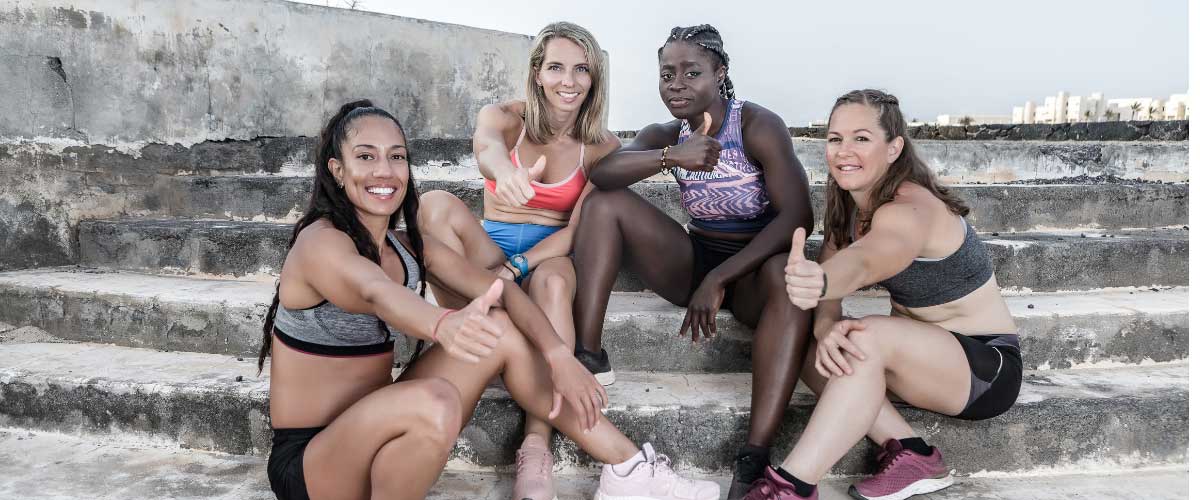
Do women have more sports injuries than men?
Statistically speaking, women and men sustain sports injuries at about the same rate. Women do, however, sustain injuries slightly more often than men. The mechanism of injury is often not the same, and injury patterns in women and men who participate in the same activities can be vastly different. Women who participate in sports such as soccer, running, CrossFit, rugby, surfing and cycling have different injuries caused by different circumstances than their male counterparts in the same sports. Because their injuries are different, so are the treatment variables. Dr. James Mazzara, MD, orthopedic specialist, serving patients in Manchester, South Windsor, Enfield, Glastonbury and the surrounding Hartford communities specializes in female sports injuries and their treatment.
Why are female athletes more injury prone?
Why are female athletes more injury prone?
There are several physical and chemical differences between female and male athletes. Research has shown these differences can affect the body’s ability to stay injury free and healthy. The most obvious difference in female athletes include:
- Estrogen: This hormone directly affects the structure and function of the musculoskeletal tissues in women where testosterone is considered the male equivalent. In smaller amounts, estrogen can improve muscle mass and strength in women. However, high estrogen levels decrease performance and strength, making female athletes more susceptible to injury.
- Flexibility: Female hormones naturally make the ligaments more elastic and flexible, which is a necessity, especially when bearing children. However, these same hormones make injuries, like a torn ACL, more common.
- Bone Structure: Men have a higher bone density than females. Less bone density can mean more injuries.
- Musculature: Muscles help stabilize the joints and prevent injury. Men traditionally have more muscle mass and are stronger than women. Less muscle mass for women can mean a less stable joint.
- Alignment of the body: Women have a wider-set pelvis which makes the alignment between the knee and the ankle more susceptible to injury. Malalignment issues can be present, also contributing to a higher likelihood of injury.
What is the Female Athlete Triad?
Orthopedic sports medicine often refers to the female athlete triad. It is the term used to describe the three most predominant health problems linked to each other in women athletes. Females who develop the female athlete triad are at a higher risk for injury, especially if participating in sports or exercise more than twelve hours a week. The female athlete triad includes the following:
- Insufficient calorie intake: Caused from not consuming enough calories as expended, often from an eating disorder. This causes a deficit in available energy for the female athlete
- Menstrual Disturbances: When menstruation slows down or stops, the female body makes less estrogen. Estrogen is necessary for bone strength and bone cell replacement.
- Bone loss: Linked to insufficient calorie intake and menstrual disturbances. The body is unable to replace older bone cells without sufficient vitamins and minerals as well as estrogen. Calcium and vitamin D are often low, and bones become weak or porous. Stress fractures can result as well as osteopenia, the precursor of osteoporosis.
What injuries are more common in female athletes?
What injuries are more common in female athletes?
Sports injuries that are more common in female athletes include:
- Shoulder Injures
- AC joint injury and shoulder separations
- Dislocated shoulder and shoulder instability
- Rotator cuff tear
- Shoulder impingement
- Elbow Injuries
- Distal biceps tear
- Distal triceps tear
- Golfer’s elbow
- UCL injury (Ulnar collateral ligament)
- Knee Injuries
- ACL injury
- MCL injury
- Patellar instability and dislocation of the knee
- Miserable Malalignment Syndrome (Runner’s Knee)
- Posterolateral corner injury
How can females prevent common sports injuries?
Women and girls can reduce their chance of sports injuries by more than 50%. Studies show that strengthening programs can reduce the risk of many common sports injuries in females. Other preventative steps include:
- Body Mechanics: Learning to jump and land properly, planting both feet to change direction and learning to lift correctly can decrease injury.
- Weightlifting programs: Training to build the correct muscles for stability and strength.
- Proper Nutrition: Watch calorie intake and eat enough of the right kinds of calories to help the body stay strong. This can help women avoid the female athlete triad.
- Rest: The proper amount of rest, both sleep and between workout sessions is paramount for proper sports conditioning.
For more information on female sports injuries, or to be evaluated for your shoulder, elbow or knee pain due to a sports injury, please contact the office of James Mazzara, MD, orthopedic shoulder, elbow and knee specialist, serving Manchester, South Windsor, Enfield, Glastonbury and the surrounding Hartford communities.